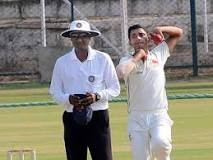William Alfred Brown, commonly known as Bill Brown, was an exceptional cricketer from Australia who left an indelible mark on the sport. Born on July 31, 1912, Brown displayed immense talent and dedication throughout his career, despite facing some setbacks along the way. Although his achievements may have been somewhat overshadowed by his more renowned contemporaries, Brown’s contribution to Australian cricket cannot be understated.
From the very beginning, Brown exhibited his passion and skill for cricket. However, his debut first-class innings for New South Wales in 1932 saw him face an unfortunate runout without even getting a chance to score. Despite this inauspicious start, he quickly established himself as a valuable player in the Sheffield Shield, earning him a surprising selection to tour England in 1934. This tour proved to be a turning point in Brown’s career, as he produced exceptional performances. His century against Lancashire paved the way for his debut in the first Test, where he contributed a crucial 73 in the second innings to secure victory for Australia. In the subsequent tests, his talent shone through even brighter, with a debut hundred at Lord’s and a commendable 72 in the third Test. These performances cemented his place in the team and showcased his ability to excel on the international stage.
Brown’s consistent batting continued in subsequent tours, notably during Australia’s tour of South Africa in 1935-36. Throughout the five Tests, he consistently scored fifties and added a century to his tally, solidifying his reputation as a reliable batsman. Although he faced some challenges during the two home Tests against England, his skills remained undeniable. In 1936, he further honed his cricketing acumen by accepting a coaching position in Brisbane, where he represented Queensland from 1936-37. His captaincy appointment in 1937-38 displayed his leadership qualities, leading a team that boasted legendary players such as Bradman, Fingleton, McCabe, and Hassett. During this period, he showcased his resilience, scoring a crucial century in the first Test after Australia was forced to follow on, and later notched an unbeaten 206 at Lord’s.
Unfortunately, Brown’s career suffered a setback due to the outbreak of World War II. He served in the Pacific with the RAAF as a flight lieutenant, which undermined his cricketing aspirations. After the war, Brown was not able to regain the same level of domination he had exhibited earlier in his career. However, he did captain Australia in their inaugural Test against New Zealand, leading his team to a resounding victory while also claiming the highest score of the match. In the final Test against India in 1947-48, he fell agonizingly short of a century, being run out for 99. Despite not being selected for the entire tour, Brown’s immense skill and experience were recognized when he was chosen to join the famous “Invincibles” team that toured England in 1948.
Brown’s final years of international cricket were marked by a handful of stellar performances, including eight centuries on the 1948 tour to England. However, the emergence of talented young players like Morris and Harvey resulted in Brown retiring from the sport after leading the Australian second team to New Zealand. Even after retiring as a player, he continued to contribute to the game as a Queensland selector from 1950-51 to 1959-60 and an Australian selector in 1952-53. His exceptional service to cricket was rightly acknowledged when the Queensland Cricket Association elected him as a life member in 1992.
Beyond his cricketing prowess, Brown was highly regarded for his humility, popularity, and amiable nature. In recognition of his remarkable contributions, he was awarded the Medal of the Order of Australia in 2000. Tragically, he succumbed to illness on March 16, 2008, at the age of 95.
William Alfred Brown will always be remembered as an outstanding cricketer who overcame setbacks and consistently demonstrated his exceptional skills on both domestic and international stages. His legacy remains an inspiration to aspiring cricketers and a testament to the rich cricketing history of Australia.


